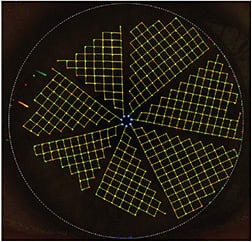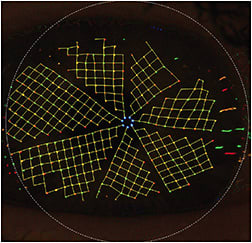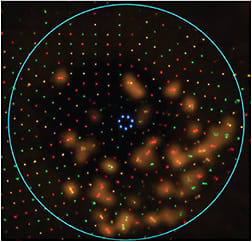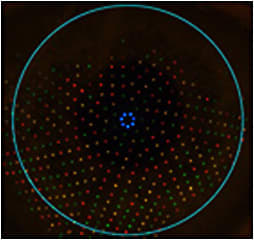Novel imaging device assesses tear film layer to increase likelihood of cataract surgery success
Over the past two decades, we have been able to improve the outcomes of cataract procedures considerably, but the accuracy of the refractive prediction is still far from perfect. In an endeavor to further reduce postoperative refractive errors, information concerning the true state of the ocular surface, which is the first refractive layer of the cornea after all, has become more essential. Since the cornea accounts for about two-thirds of the total dioptric power of the eye, small variations in the measured corneal shape, that can be caused by ocular surface irregularity, may have a large effect on the recommended power of an IOL.1 (See “The Tear Film: An Overview,” below.) Using reflection-based technology, the Cassini Ambient topographer allows for accurate cylinder management for astigmatic keratotomies and toric IOLs by measuring the shape, state, and quality of the tear film.
Here I discuss, how, specifically, the device accomplishes this.
THE TEAR FILM: AN OVERVIEW
The ocular surface is covered by a thin, liquid film called the tear film. The composition of the tear film is complex and plays an essential role in nourishing and protecting the cornea.
The tear film has 3 distinct layers: the top hydrophobic lipid layer, made of a thin sheet of lipids that reduces surface tension, helps to spread the tears after each blink, and protects the underlying aqueous layer from evaporation; the aqueous layer, which is the thickest layer of the tear film, and plays an important role in the oxygenation of the cornea; and the mucous layer, which compensates for corneal unevenness and reduces friction during blinking.2
In addition to nourishing and protecting the cornea, the tear film forms a smooth refractive surface over the uneven corneal surface. At each blink, the tear film is refreshed and goes through a dynamic tear build-up phase to form a tear film layer.
Local rupture in the hydrophobic lipid layer exposes the aqueous layer directly to air, leading to high tear-evaporation rates that potentially produce rupture of the tear film.3 The time between the formation of the tear film build-up and break-up of the tear film depends on the quality of the tear film (mix of lipids and water), the environmental conditions, and the pathology of the cornea.
Stability of the Tear Film
Ocular Surface Qualifier (OSQ) (Figure 1), Ocular Surface Dynamics (OSD), and Ocular Surface Visualization (OSV) recording data are presented in a complete overview in the Cassini software interface, providing immediate insight into the status of the patient’s tear film layer.

The Ocular Surface Visualization (OSV) recording is a significant educational tool for our patients to better understand their ocular surface health and diagnosis prior to refractive cataract surgery.
Healthy tear film layers appear very even and reflect light like a convex mirror. Tear film layers that tend to break up, or evaporate quickly, appear very uneven, leading to a distortion of the reflective points (Figure 2).

If irregularity is diagnosed, surgeons can then carefully assess the ocular surface dynamics and actual behavior of the tear film before continuing with power IOL calculations.
Patented Ocular Surface Technology
The Cassini Ambient employs a dual modality system for imaging of the human eye in both the visible and infrared spectrum.
Specifically, a multitude of colored and infrared LEDs illuminate the entire shape of the anterior surface, centrally and including the peripheral zone, enabling the surgeon to view a reconstruction of the patient’s cornea.
The device projects a signature pattern of color LEDs off the convex mirror constituted by the tear film toward the device’s RGB camera to ensure a direct relationship between each image point and a corresponding source point.
When the surface of the cornea is smooth, each projected color LED appears regular in the image, forming a pristine shape (Figure 3). However, during the inner blink period, the tear film changes dynamically; producing localized “dry” regions, which leads to distorted shapes of the projected color LEDs. To capture the transition from a pristine shape to distorted reflection, the Cassini Ambient processes every frame and monitors the uniformity of every reflected color LED. The distorted LED reflections are then marked to indicate potential dry regions by displaying an active orange overlay. (Figure 4)


















